We have done well growing beans here. Field Beans and "Trail of Tears" have been successful.
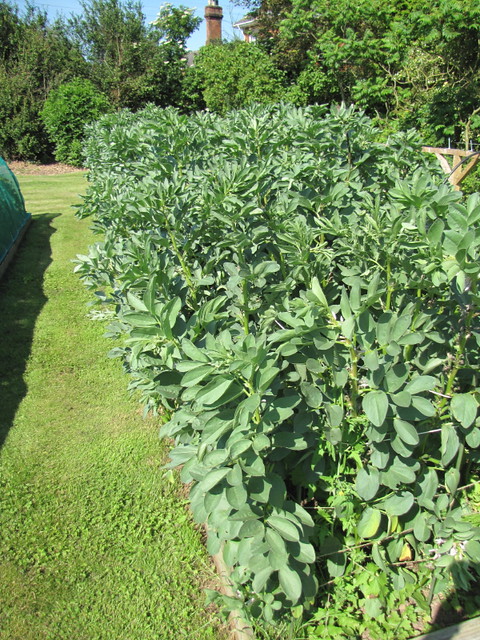 Field Beans by British Red, on Flickr
Field Beans by British Red, on Flickr
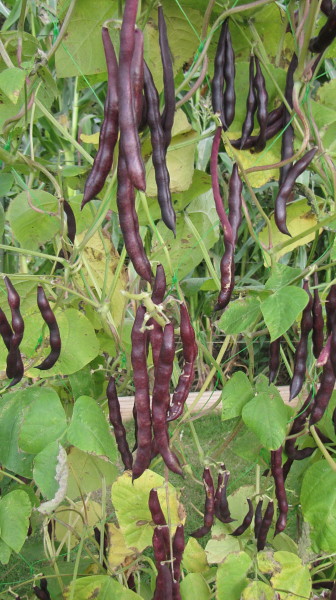 Trail of Tears Beans TRipening by British Red, on Flickr
Trail of Tears Beans TRipening by British Red, on Flickr
Both are good fresh - but that does not help us over Winter unless we freeze them
We have converted them to baked beans....
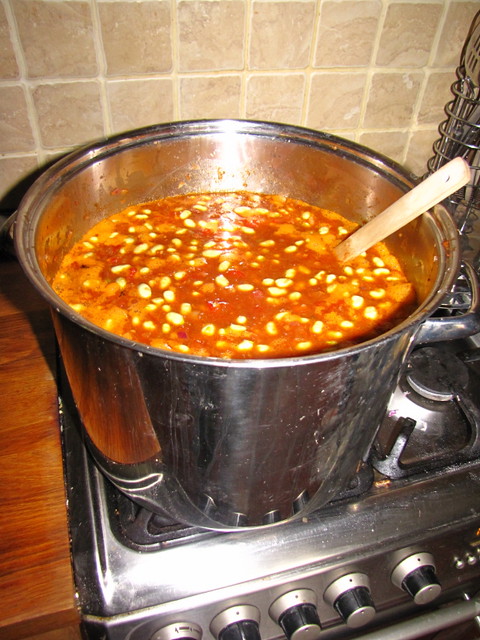 Home Made baked beans by British Red, on Flickr
Home Made baked beans by British Red, on Flickr
But the flavour and texture of the bean was not quite right. So the search is on to find a high yielding, easy to dry, flavourful bean.
Today I shelled the beans I harvested from the test bed. We tried 50 sq feet of three varieties this year;
Cannellini / Haricot (white small beans as in "Heinz baked beans",
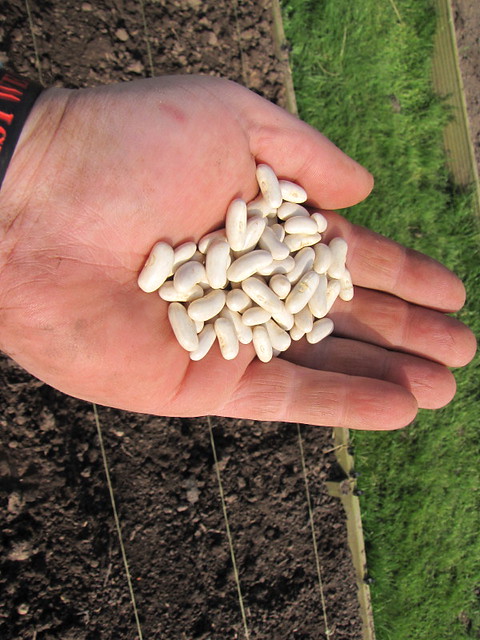 Cannellini Haricot Beans by British Red, on Flickr
Cannellini Haricot Beans by British Red, on Flickr
Dutch Brown Beans (small light brown beans, not grown in this country)
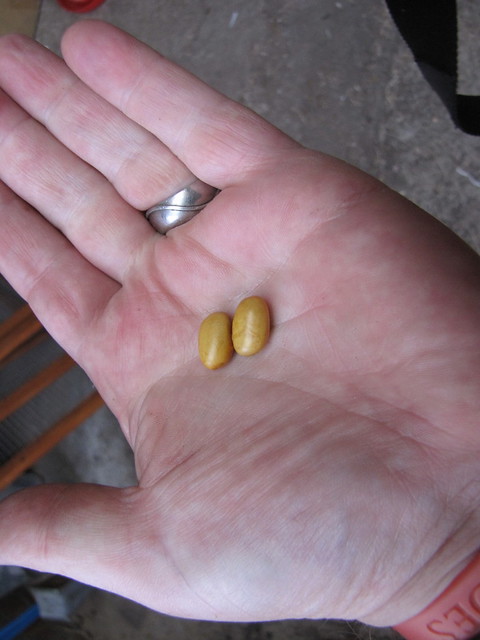 Dutch Brown Beans by British Red, on Flickr
Dutch Brown Beans by British Red, on Flickr
Soya Beans (attractive to BB because of their high protein content)
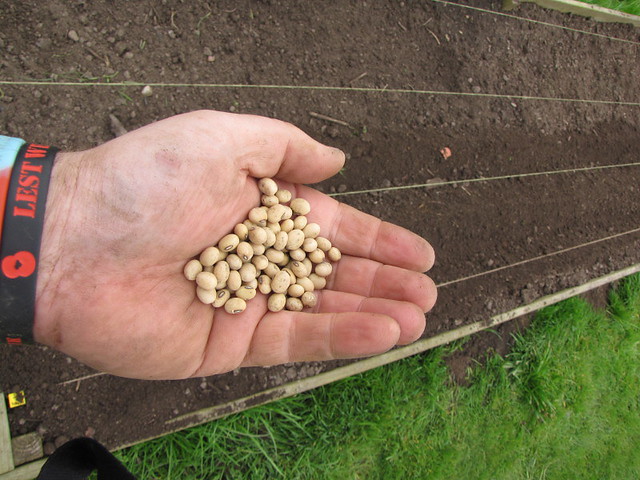 Soybeans Soya Bean by British Red, on Flickr
Soybeans Soya Bean by British Red, on Flickr
I had to import small quantities of seed stock (open pollinated, non GM) for each variety.
I suspect the soya is delicious. The cotton tailed bandits certainly thought so. They destroyed the entire crop in 24 hours. I did still manage to get a decent amount of protein of course - although it tasted like.....rabbit! :evil:
So...soya beans seem to be attractive to vermin...not a good start. We will rule them out till next year when we will try them again. I they are destroyed a second time they will prove themselves too vulnerable for this site.
This left us with two varieties - the Dutch Brown and Cannellini / Haricot. The harvested pods were set to dry on wire racks on the greenhouse
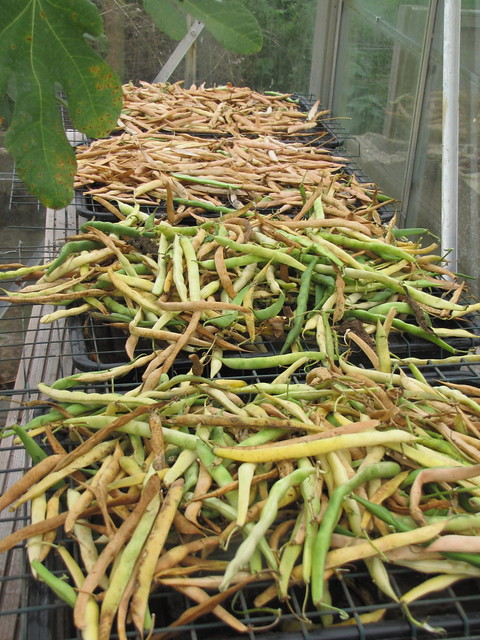 Bean Seed Saving by British Red, on Flickr
Bean Seed Saving by British Red, on Flickr
When dry they were shelled
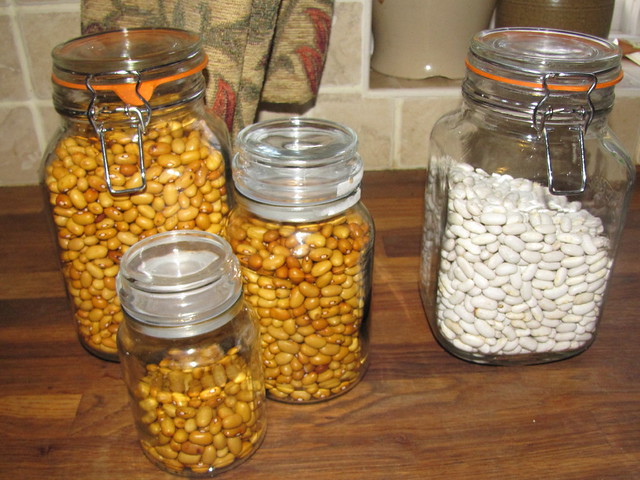 Bean harvest - Haricot and Dutch Brown by British Red, on Flickr
Bean harvest - Haricot and Dutch Brown by British Red, on Flickr
We weighed the beans and got
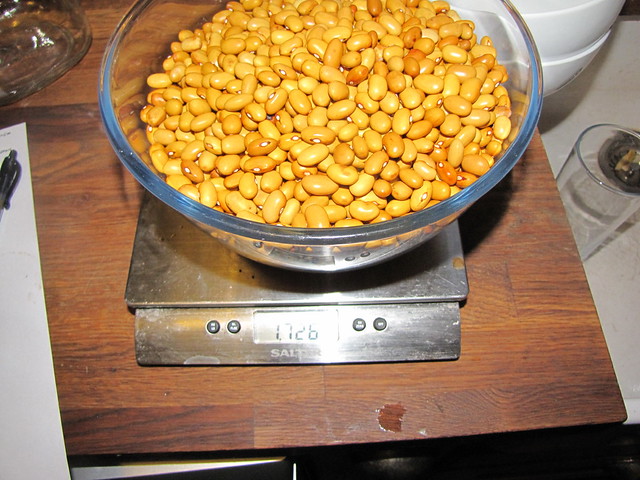 Weighing Dutch Brown Beans by British Red, on Flickr
Weighing Dutch Brown Beans by British Red, on Flickr
Haricot Beans 1156g
Dutch Brown Beans 2482g
We also weighed 100 beans to work out an approximate number of beans
Haricot Beans =70g per 100 beans - a total of 1651 beans.
Dutch Brown Beans 58g per 100 beans - a total of 4279 beans.
Now the planting spacing of these beans is in rows about a foot apart (so we had four rows) and at an interval of 4" (three beans per foot).
We had allocated 50 square foot per variety. This gave us four rows, each 12.5 foot long. That means we originally planted 150 beans in 50 square feet (3 per square foot).
So our increase was:
Haricot - approximately an 11 fold increase in numbers of beans
Dutch Brown - approximately 28 old increase in numbers of beans.
I am always interested to know how many I would need to grow for full on self sufficiency.
Lets look to a post made on another forum a while ago
So we know we need 28 to 30 kilos (allowing for saving next years seed) of beans, per person, per year.
With Haricot we get 1156g in 50 square feet.
That is 23g per square foot.
To get 30,000g we need 1300 square feet. 1300 square feet would also require 3900 seed beans. At 70g per 100 beans that is an additional 2,730g for the next years seed - this equates to another 120 square feet.
So to grow a man year of Haricot beans, we need 3kg of seed and roughly 1500 square feet.
With Dutch Brown we get 2482g in 50 square feet.
That is 50g per square foot.
To get 30,000g we need 600 square feet. 600 square feet would require 1044g of seed - another 25 square feet.
So to grow a man year of Dutch Brown beans, we need 1kg of seed and roughly 650 square feet.
The next step in this experiment will be to cook up quantities of both bean types and to see how they taste.
High yield is great - but not if they are inedible
I figure if they make a good "baked bean" they will be fine in chilli etc. So baked beans will be the "control recipe". I'll post results i there is interest?
 Field Beans by British Red, on Flickr
Field Beans by British Red, on Flickr Trail of Tears Beans TRipening by British Red, on Flickr
Trail of Tears Beans TRipening by British Red, on FlickrBoth are good fresh - but that does not help us over Winter unless we freeze them
We have converted them to baked beans....
 Home Made baked beans by British Red, on Flickr
Home Made baked beans by British Red, on FlickrBut the flavour and texture of the bean was not quite right. So the search is on to find a high yielding, easy to dry, flavourful bean.
Today I shelled the beans I harvested from the test bed. We tried 50 sq feet of three varieties this year;
Cannellini / Haricot (white small beans as in "Heinz baked beans",
 Cannellini Haricot Beans by British Red, on Flickr
Cannellini Haricot Beans by British Red, on FlickrDutch Brown Beans (small light brown beans, not grown in this country)
 Dutch Brown Beans by British Red, on Flickr
Dutch Brown Beans by British Red, on FlickrSoya Beans (attractive to BB because of their high protein content)
 Soybeans Soya Bean by British Red, on Flickr
Soybeans Soya Bean by British Red, on FlickrI had to import small quantities of seed stock (open pollinated, non GM) for each variety.
I suspect the soya is delicious. The cotton tailed bandits certainly thought so. They destroyed the entire crop in 24 hours. I did still manage to get a decent amount of protein of course - although it tasted like.....rabbit! :evil:
So...soya beans seem to be attractive to vermin...not a good start. We will rule them out till next year when we will try them again. I they are destroyed a second time they will prove themselves too vulnerable for this site.
This left us with two varieties - the Dutch Brown and Cannellini / Haricot. The harvested pods were set to dry on wire racks on the greenhouse
 Bean Seed Saving by British Red, on Flickr
Bean Seed Saving by British Red, on FlickrWhen dry they were shelled
 Bean harvest - Haricot and Dutch Brown by British Red, on Flickr
Bean harvest - Haricot and Dutch Brown by British Red, on FlickrWe weighed the beans and got
 Weighing Dutch Brown Beans by British Red, on Flickr
Weighing Dutch Brown Beans by British Red, on FlickrHaricot Beans 1156g
Dutch Brown Beans 2482g
We also weighed 100 beans to work out an approximate number of beans
Haricot Beans =70g per 100 beans - a total of 1651 beans.
Dutch Brown Beans 58g per 100 beans - a total of 4279 beans.
Now the planting spacing of these beans is in rows about a foot apart (so we had four rows) and at an interval of 4" (three beans per foot).
We had allocated 50 square foot per variety. This gave us four rows, each 12.5 foot long. That means we originally planted 150 beans in 50 square feet (3 per square foot).
So our increase was:
Haricot - approximately an 11 fold increase in numbers of beans
Dutch Brown - approximately 28 old increase in numbers of beans.
I am always interested to know how many I would need to grow for full on self sufficiency.
Lets look to a post made on another forum a while ago
Chiron said:A great deal of the work has already been done by the emergency relief agencies;
http://www.who.int/nutrition/publications/en/nut_needs_emergencies_text.pdf
The Mormons, LDS, have their basic storage list (Grains, pulses, dried milk, oil, salt and sugar/honey etc).
http://lds.about.com/library/bl/faq/blcalculator.htm
From the above you get the following for an adult for 1 year/1month:
Grains 300lbs/25lbs 136.4kg/11.4kg
Fats/Oils 13lbs/1.1lbs 5.9kg/0.49kg (On average a litre of oil weighs 800g)
Legumes 60lbs/5lbs 27.3kg/2.3kg
Sugar 60lbs/5lbs 27.3kg/2.3kg
Milk 75lbs/6.25lbs 34.1kg/2.8kg
Salt 5lbs/0.42lbs 2.3kg/0.19kg
.
So we know we need 28 to 30 kilos (allowing for saving next years seed) of beans, per person, per year.
With Haricot we get 1156g in 50 square feet.
That is 23g per square foot.
To get 30,000g we need 1300 square feet. 1300 square feet would also require 3900 seed beans. At 70g per 100 beans that is an additional 2,730g for the next years seed - this equates to another 120 square feet.
So to grow a man year of Haricot beans, we need 3kg of seed and roughly 1500 square feet.
With Dutch Brown we get 2482g in 50 square feet.
That is 50g per square foot.
To get 30,000g we need 600 square feet. 600 square feet would require 1044g of seed - another 25 square feet.
So to grow a man year of Dutch Brown beans, we need 1kg of seed and roughly 650 square feet.
The next step in this experiment will be to cook up quantities of both bean types and to see how they taste.
High yield is great - but not if they are inedible
I figure if they make a good "baked bean" they will be fine in chilli etc. So baked beans will be the "control recipe". I'll post results i there is interest?



